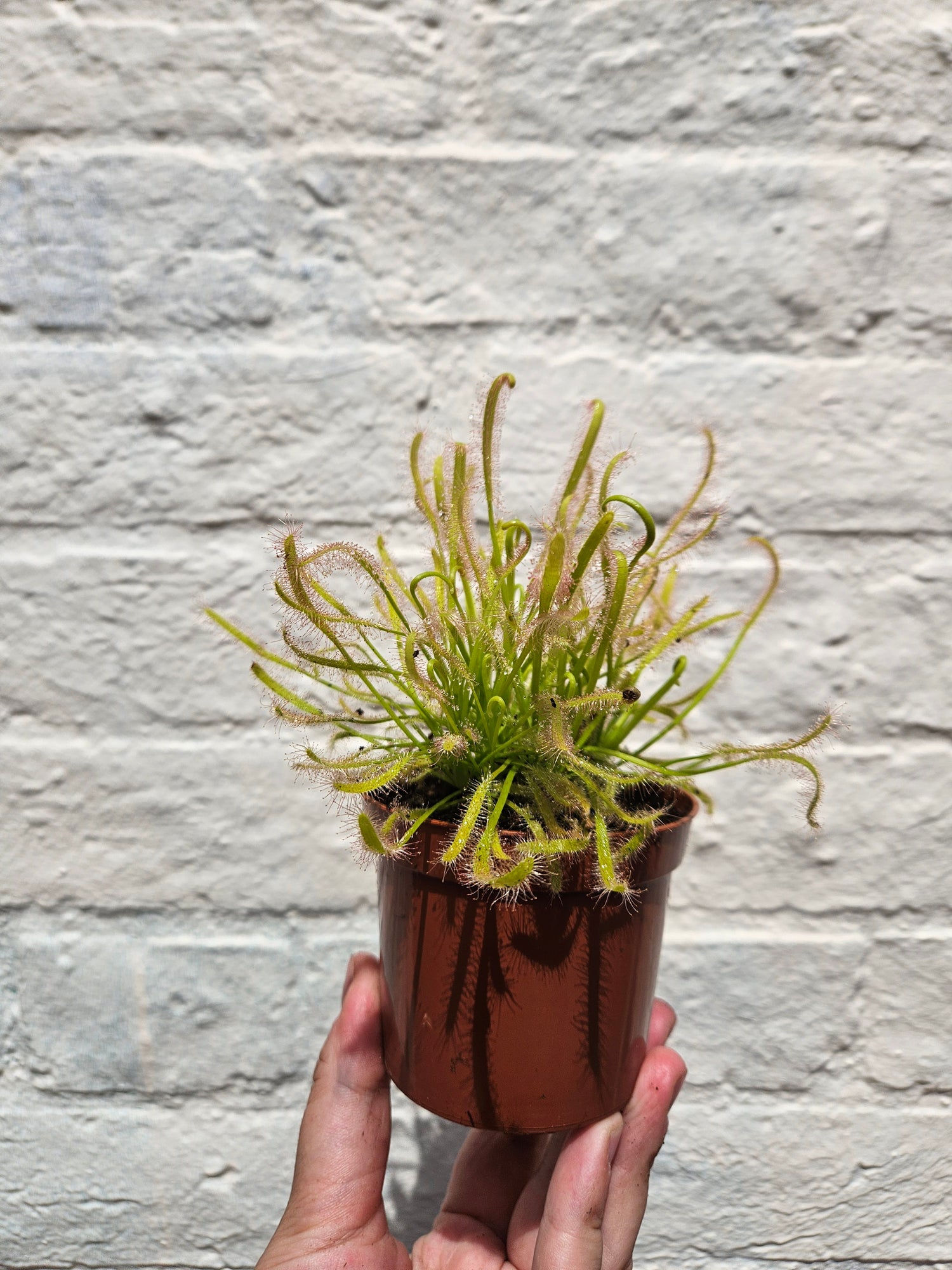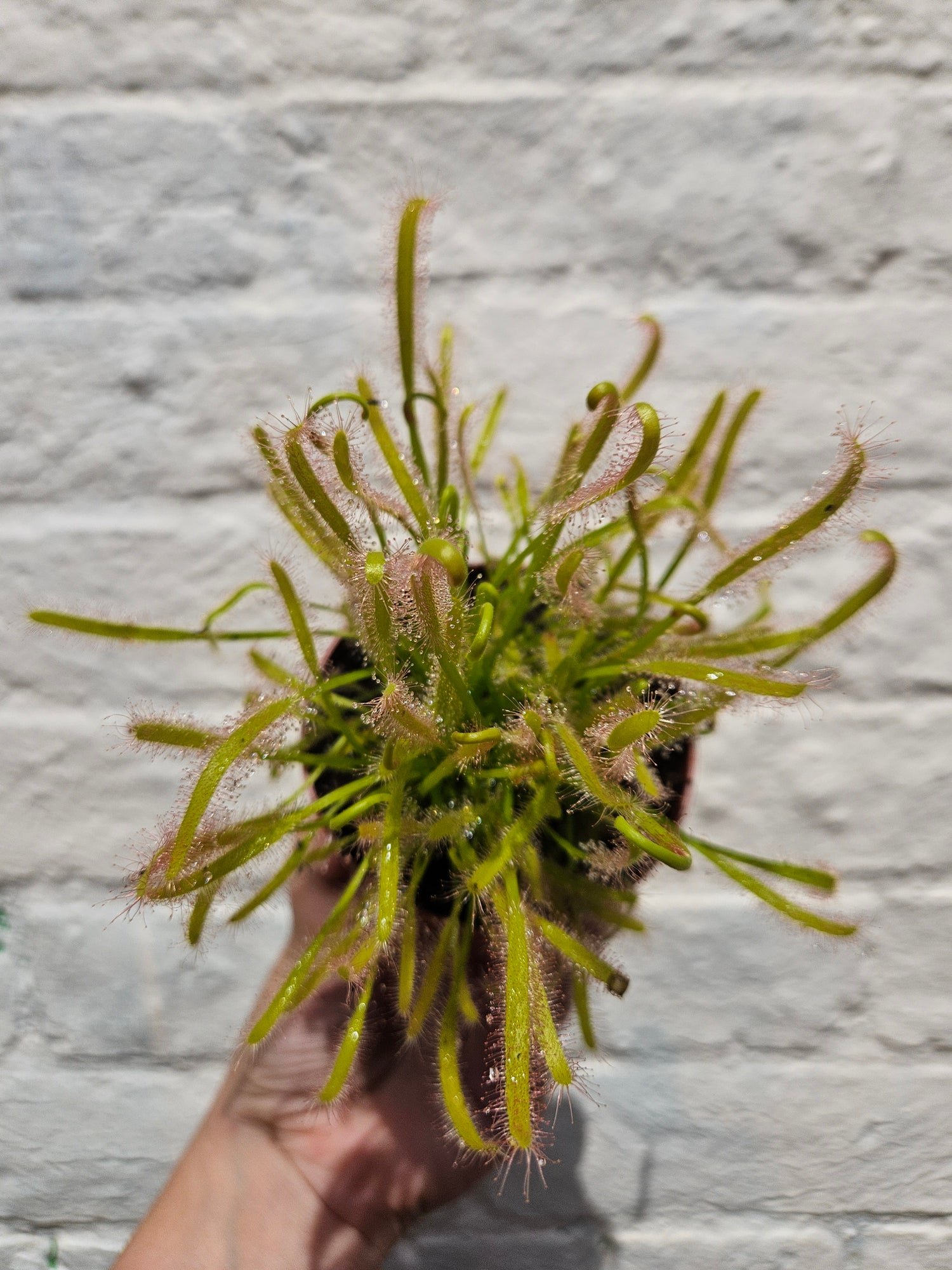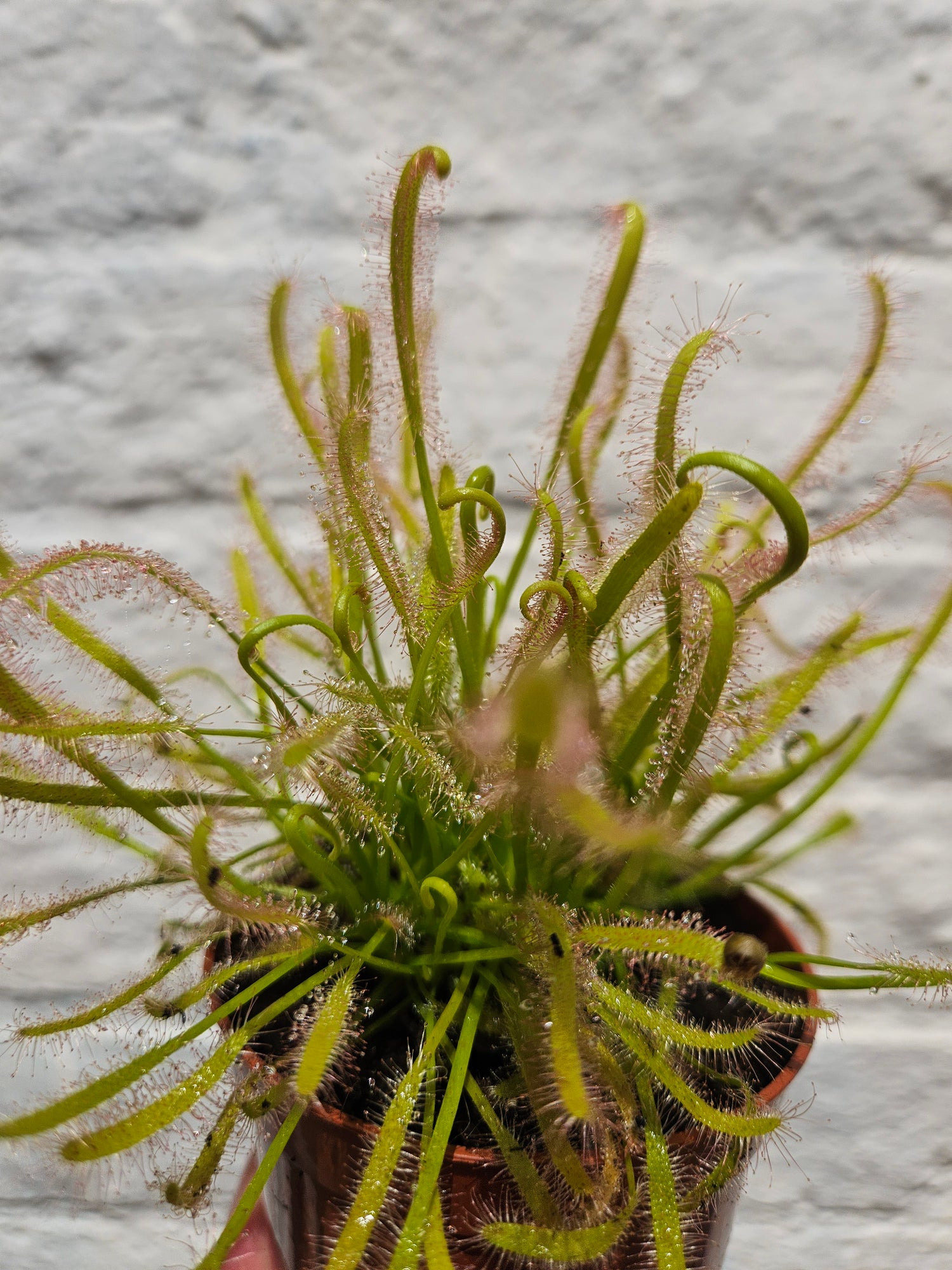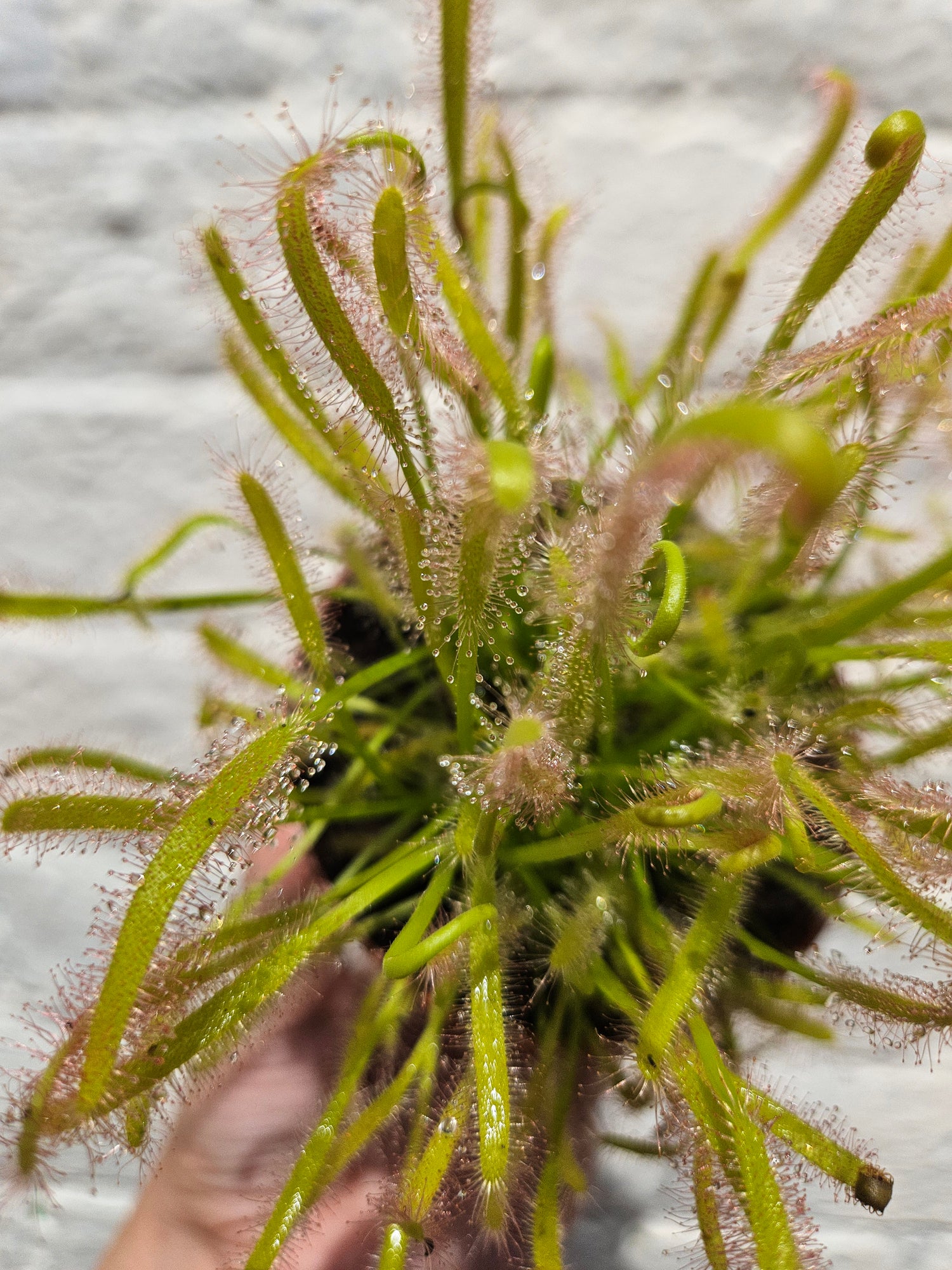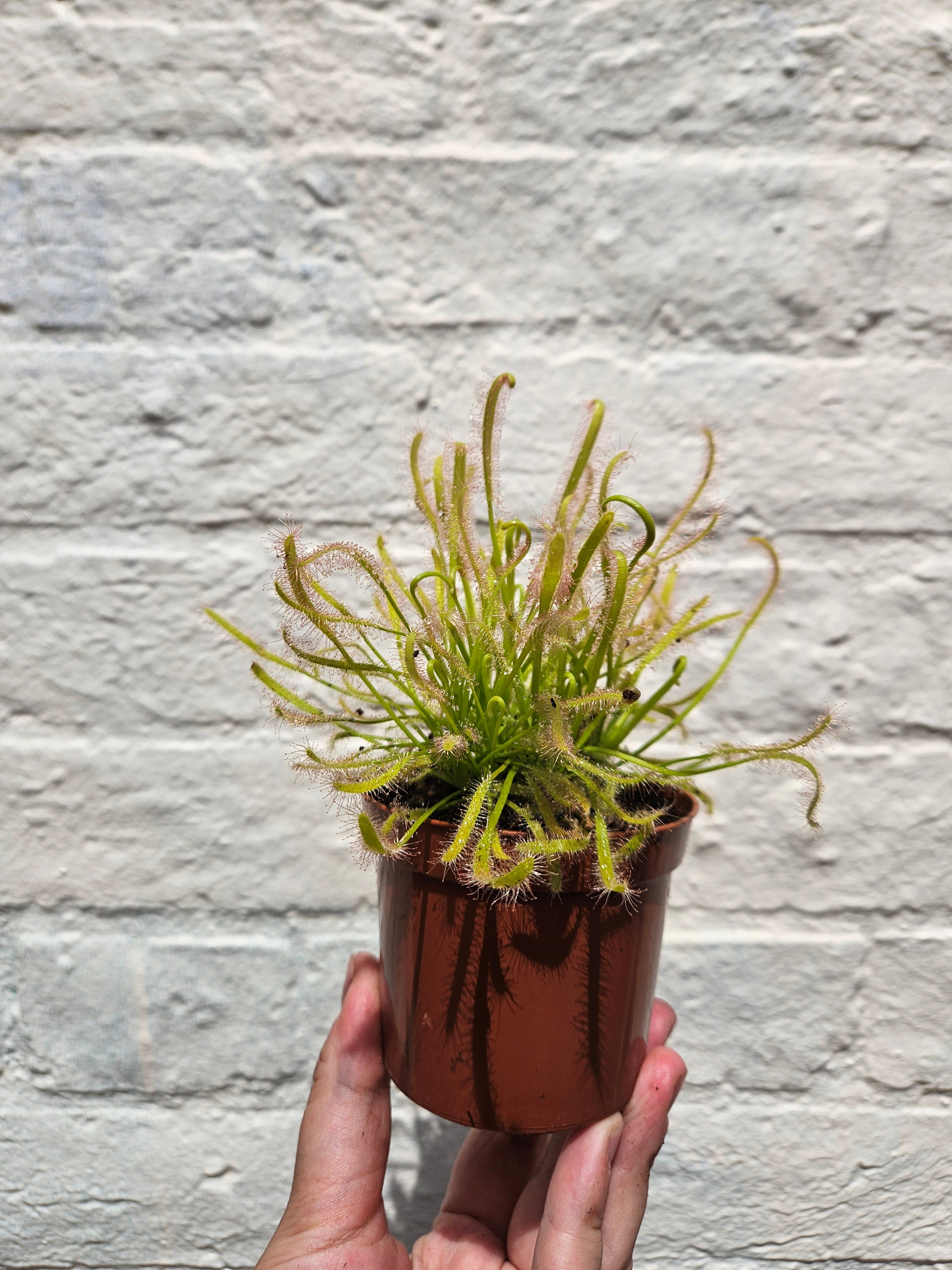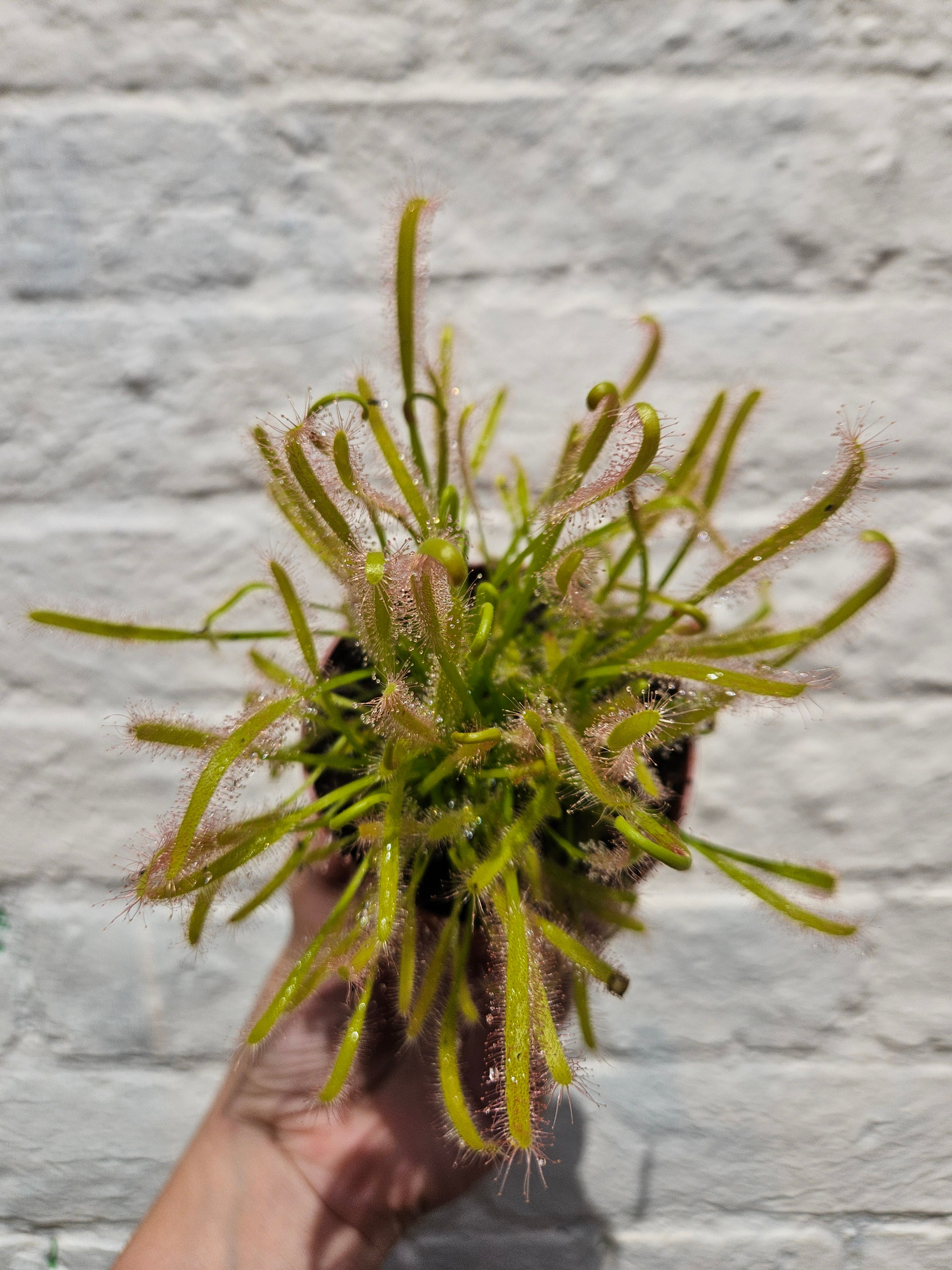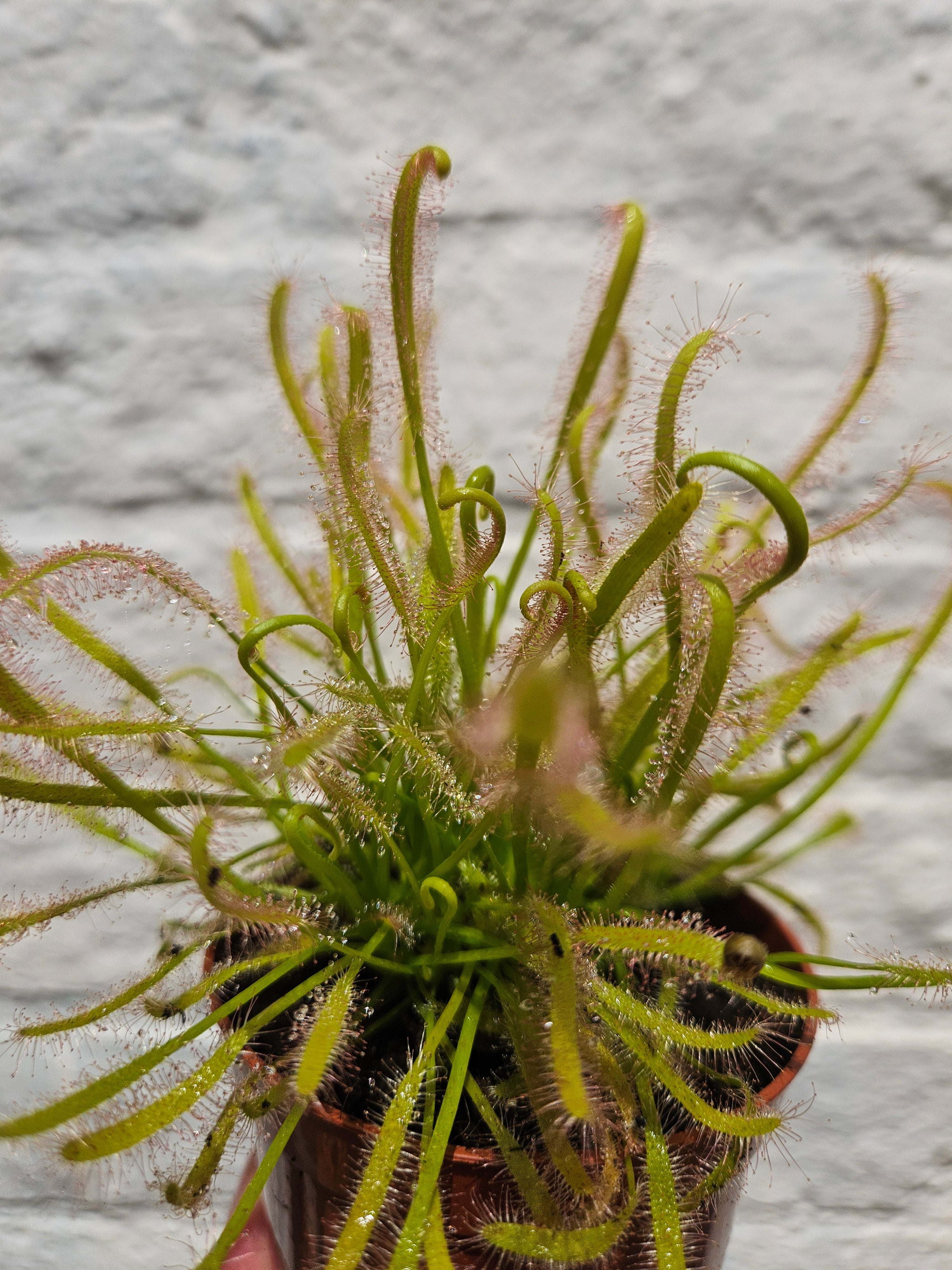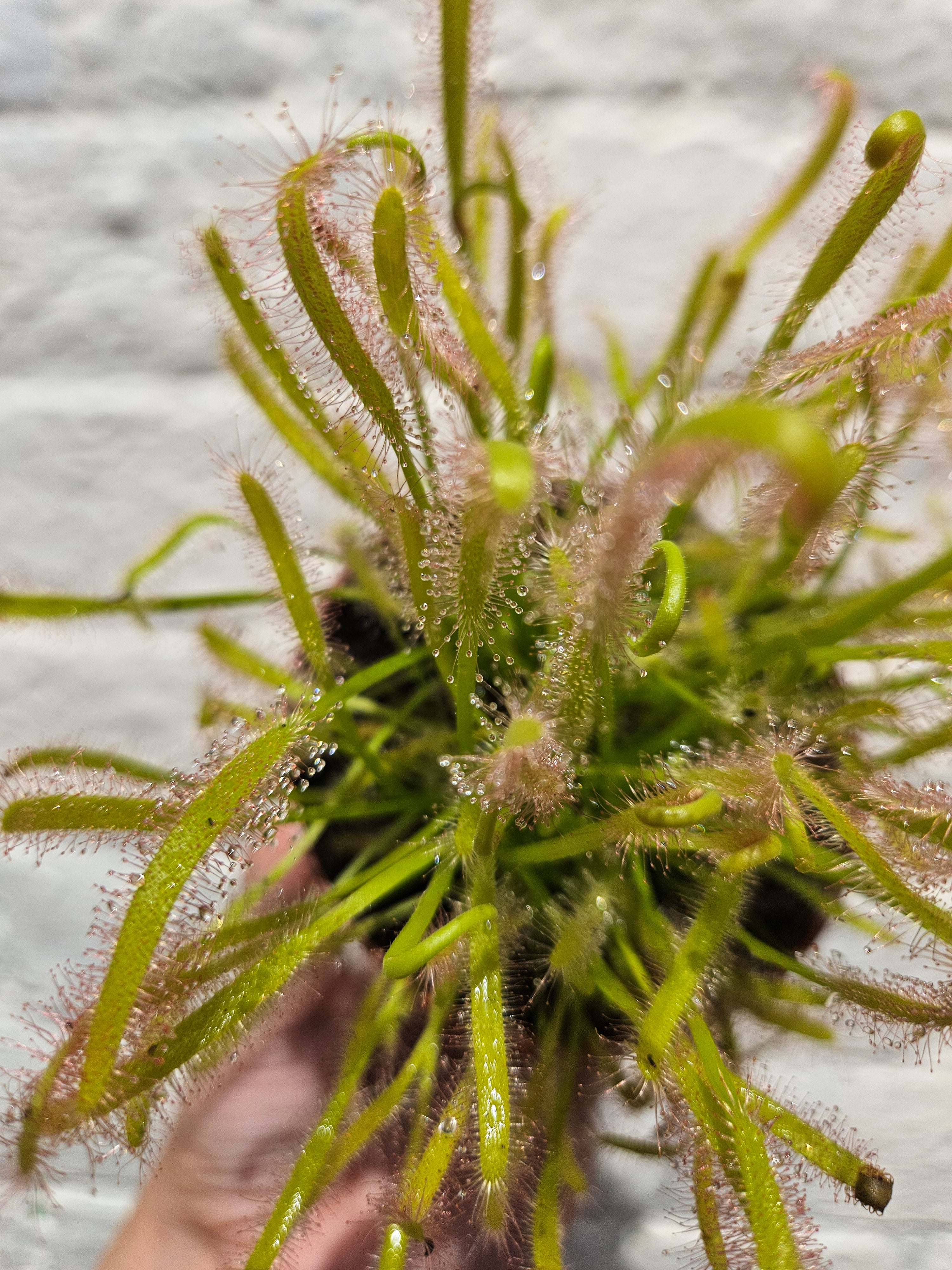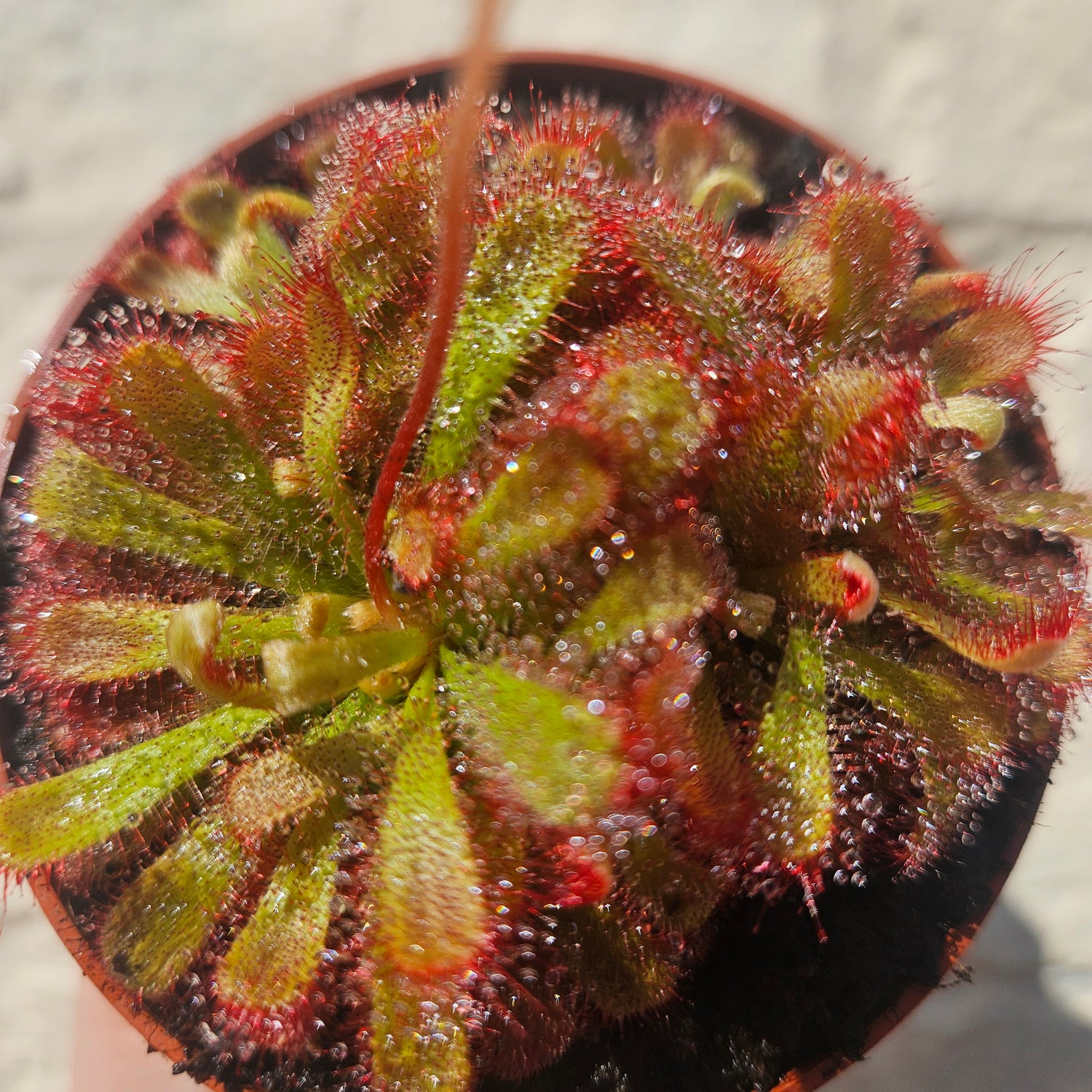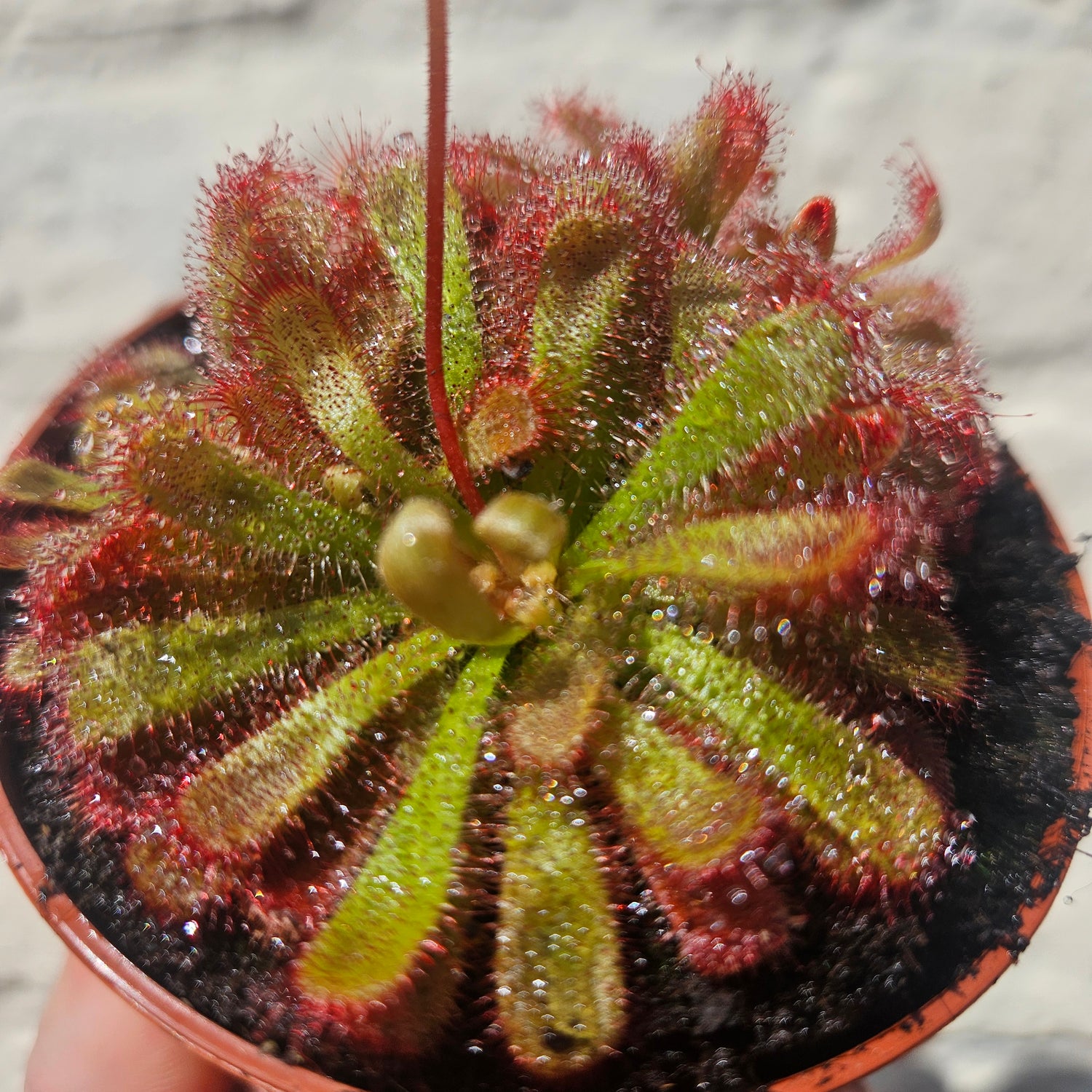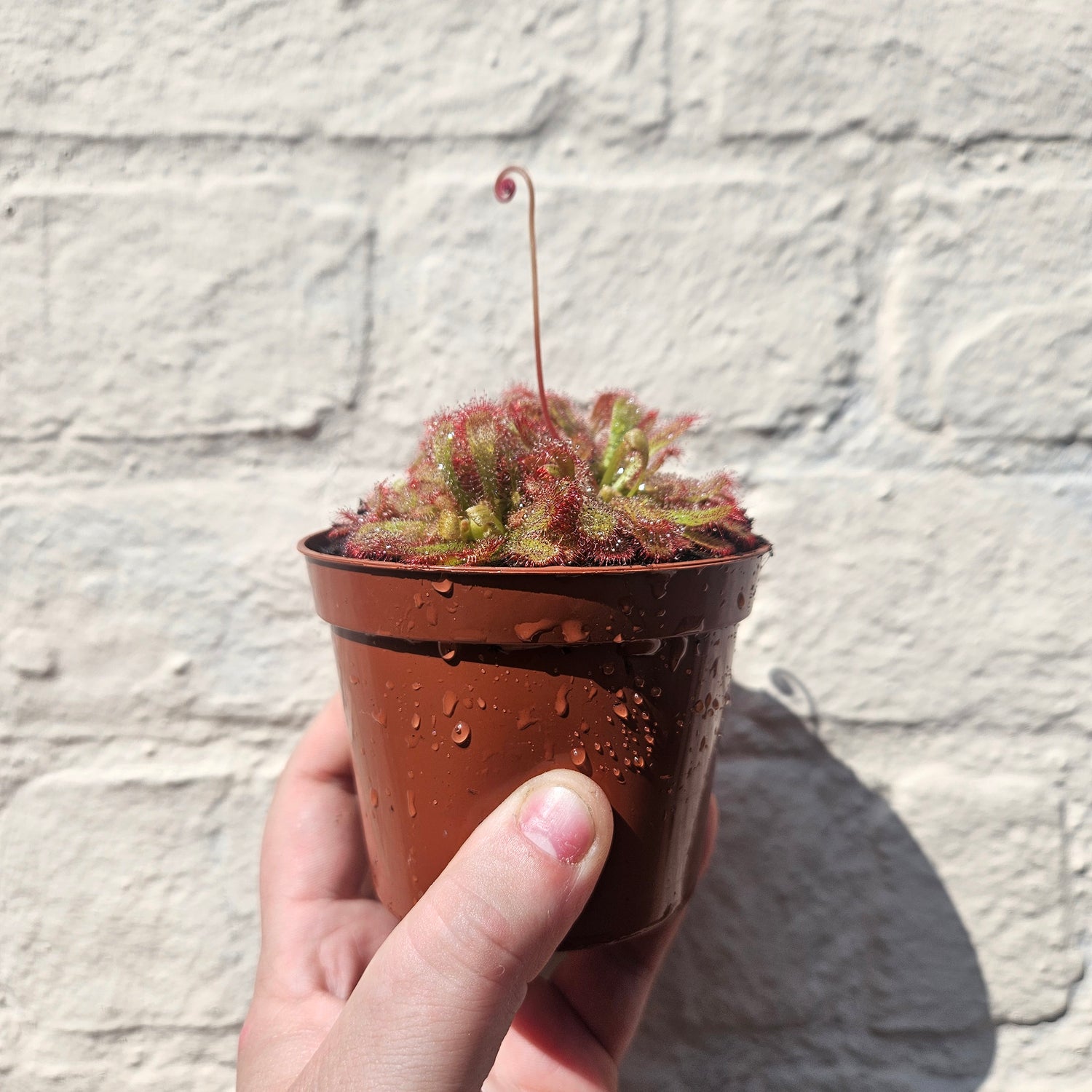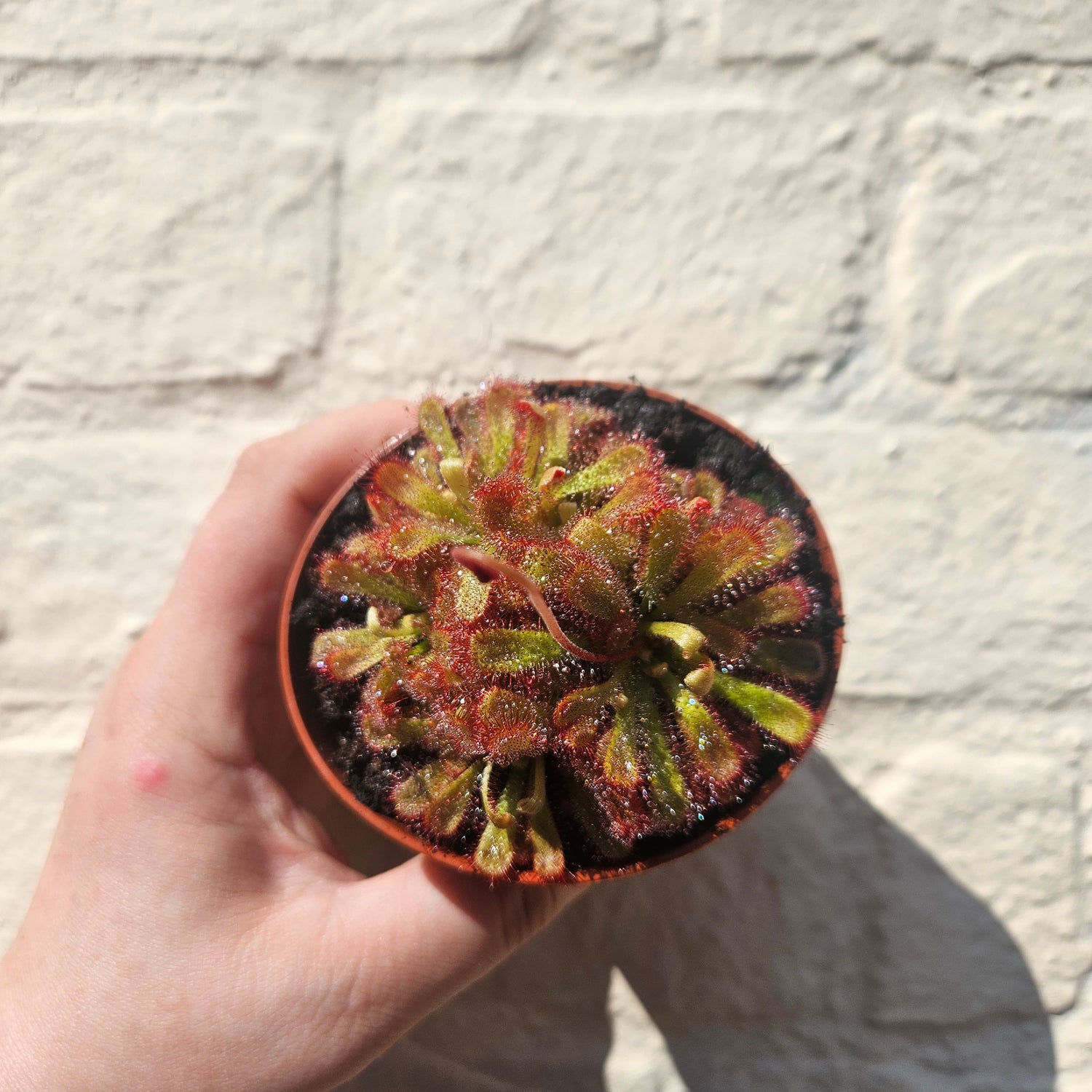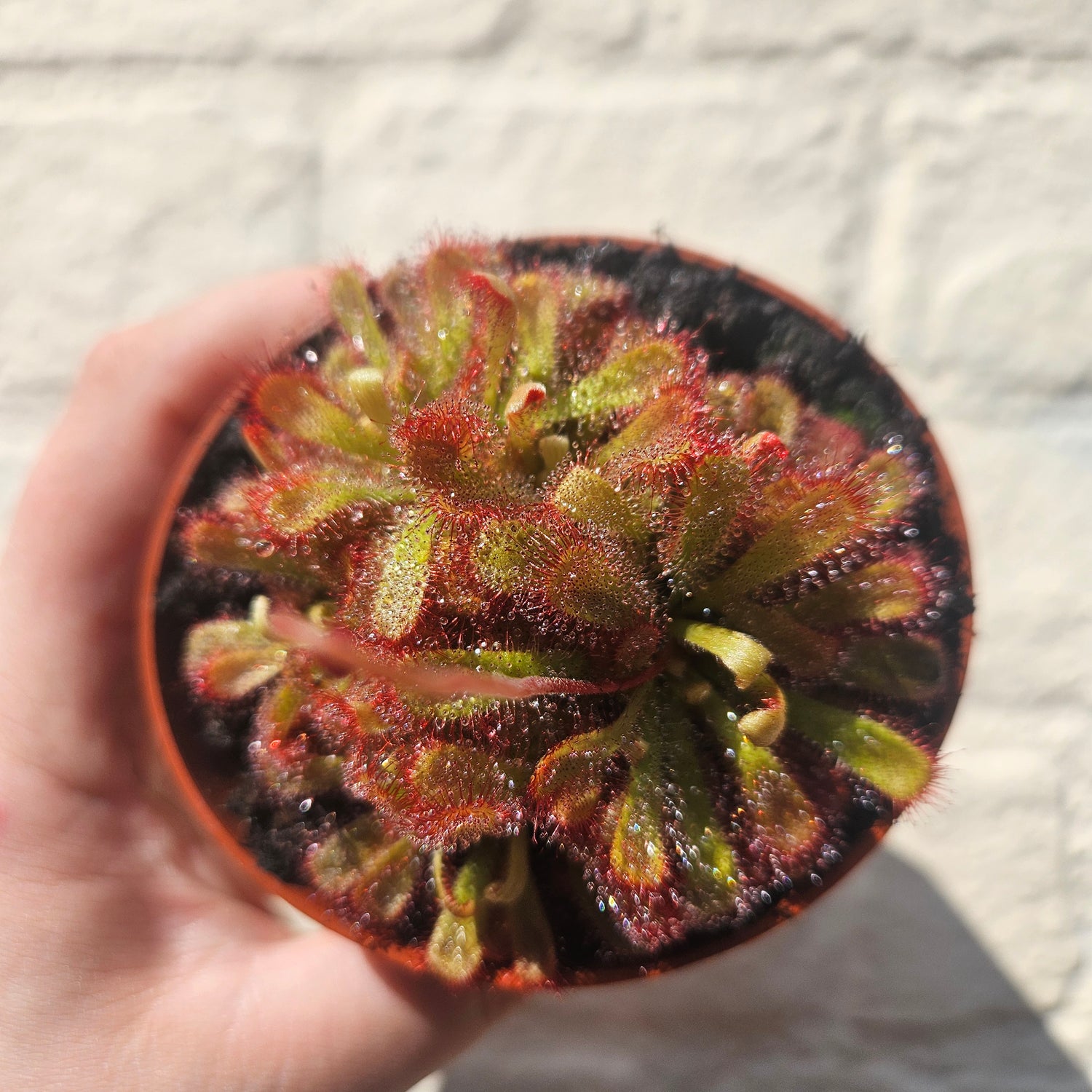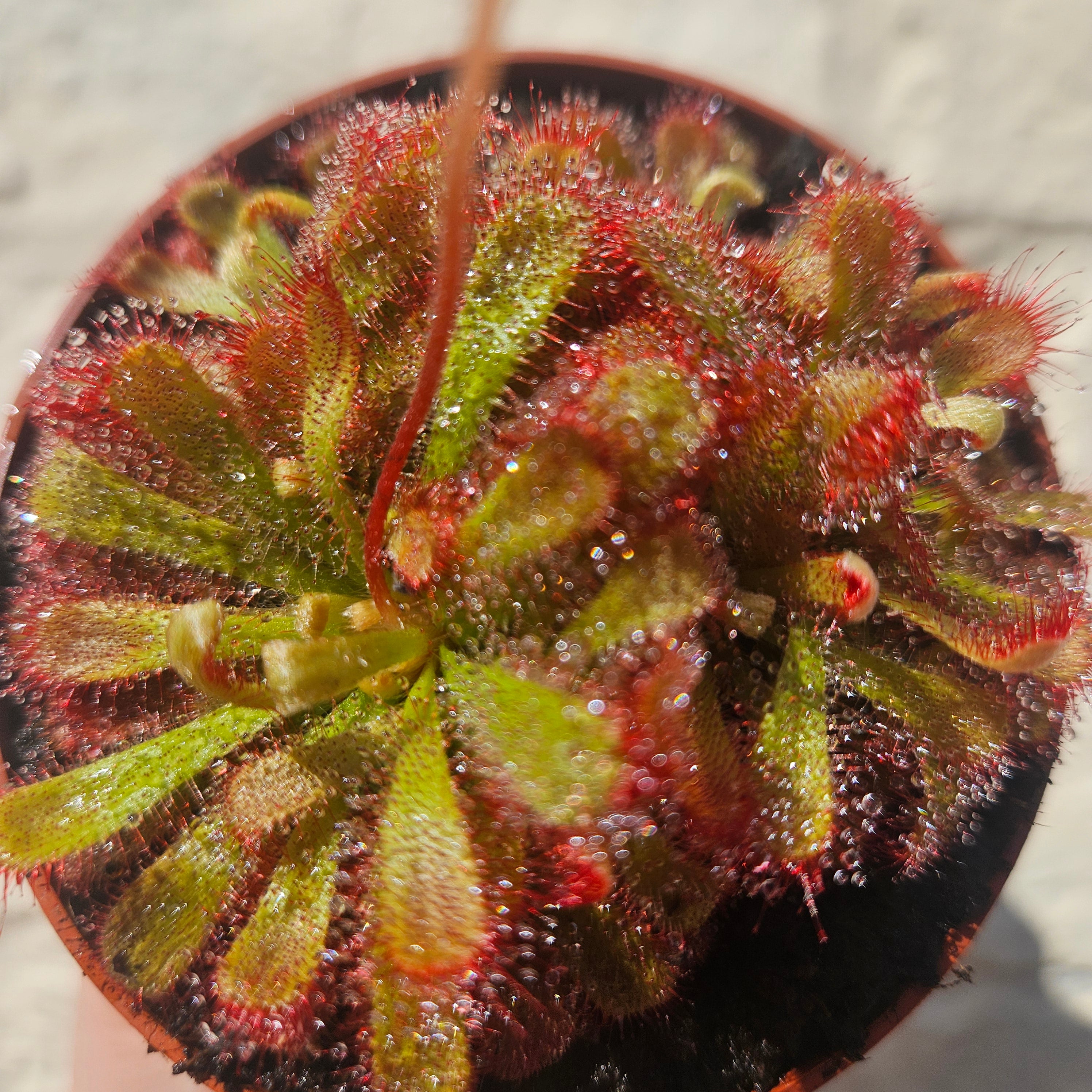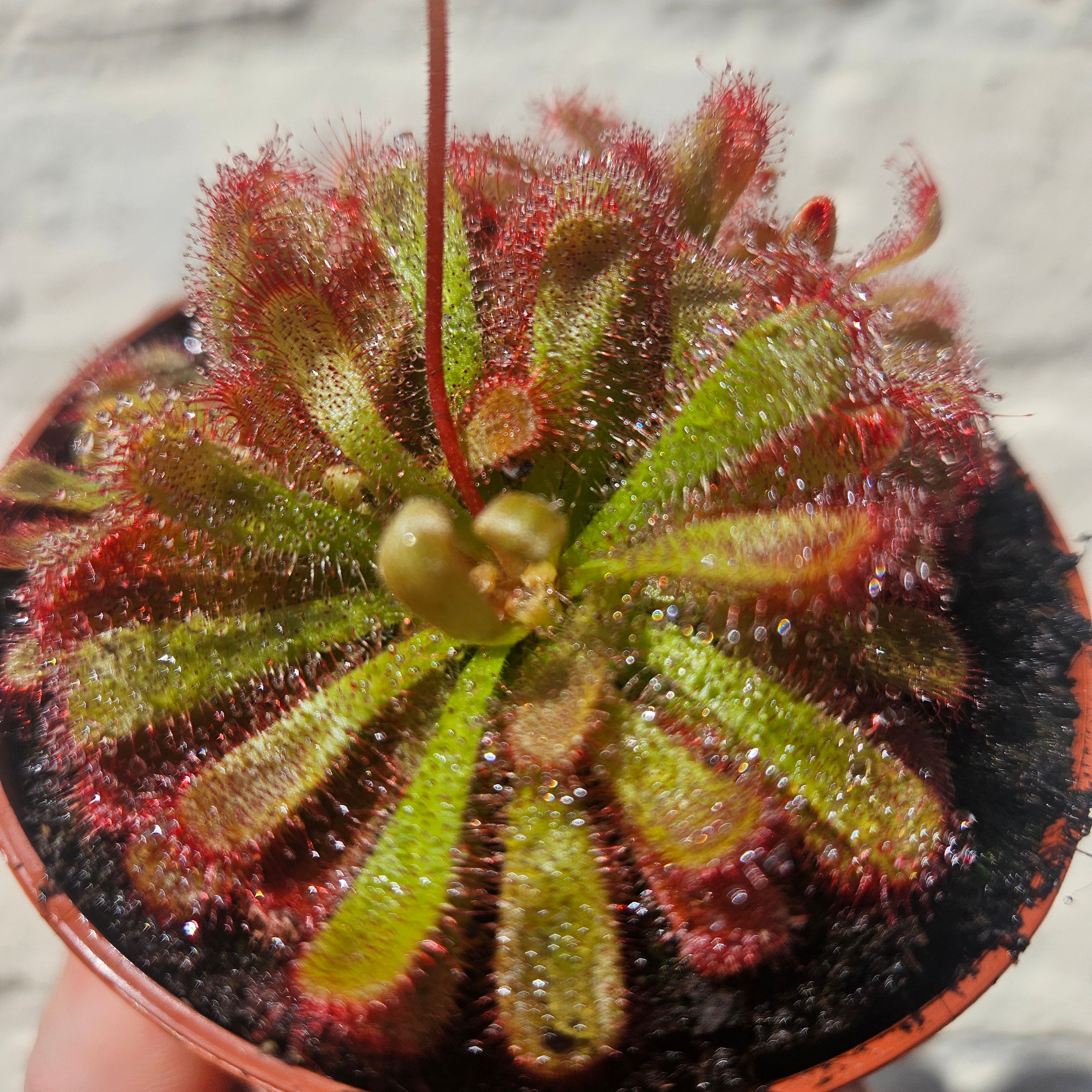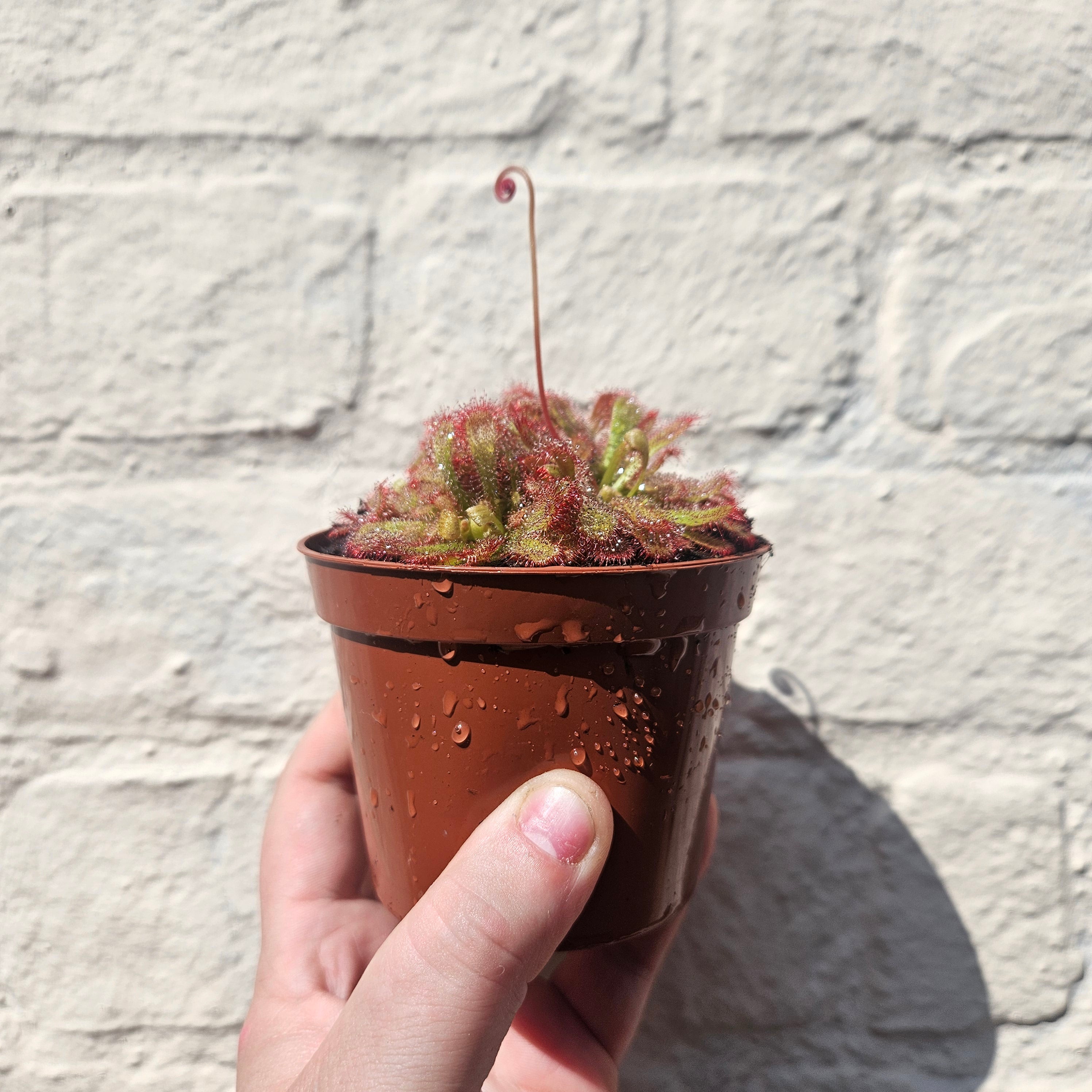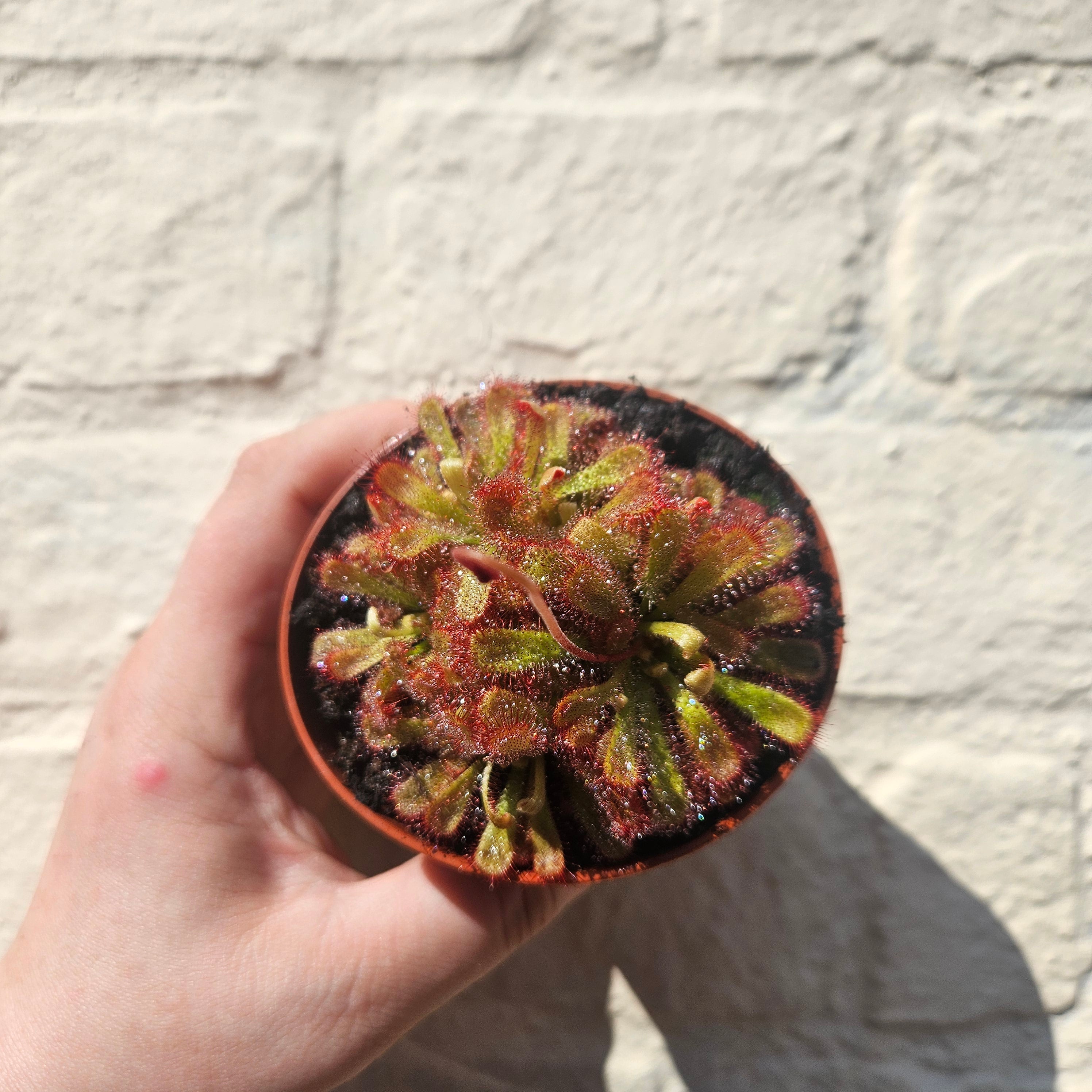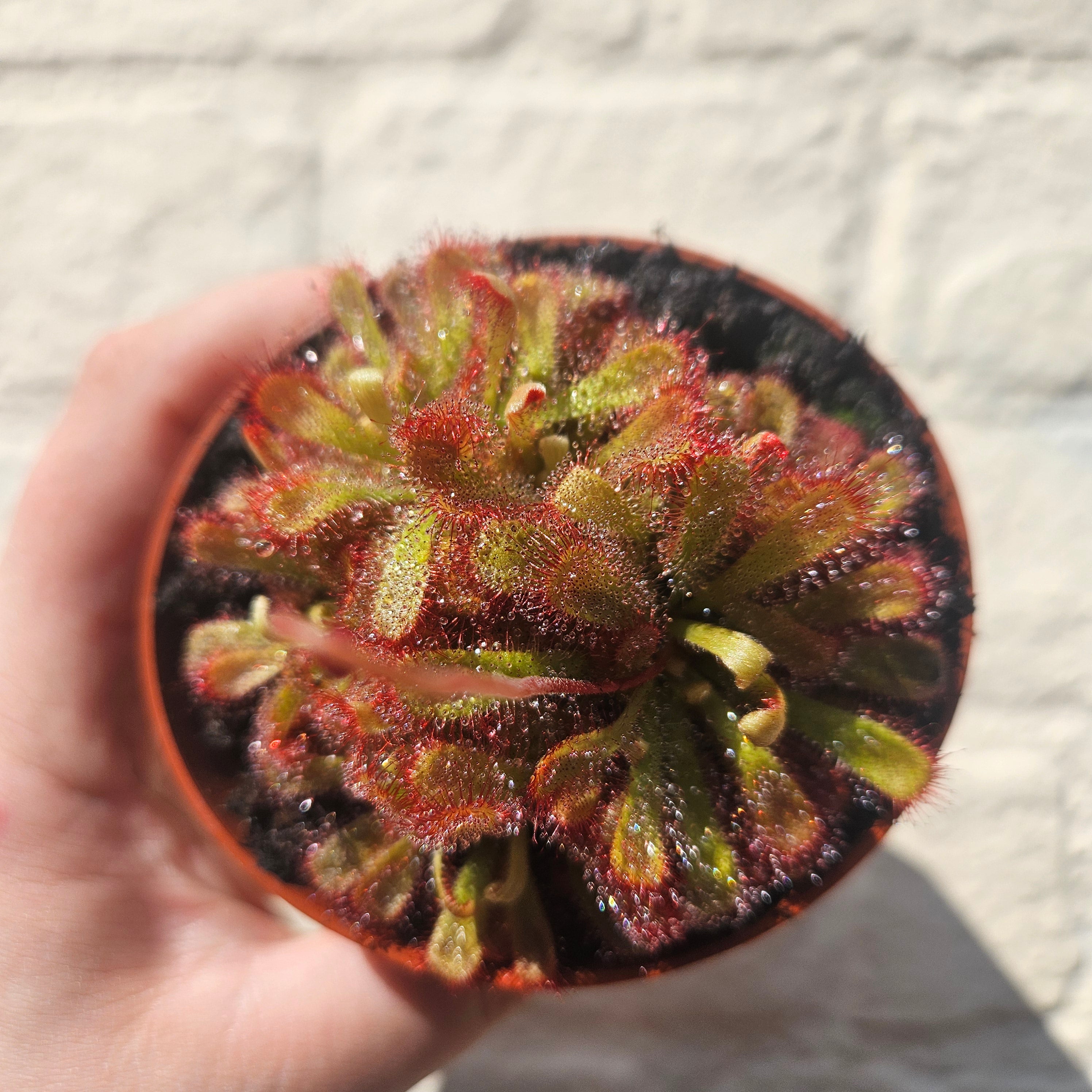Enter the mesmerising realm of Drosera capensis, commonly known as the Cape Sundew. Native to the Cape region of South Africa, these fascinating carnivorous plants thrive in wetlands and marshy environments—areas known for their nutrient-poor soil but abundant moisture. Far more than botanical curiosities, Cape Sundews are remarkable insectivores, and in this article, we’ll dive deeper into their extraordinary world.
Drosera capensis Overview
Characterised by their long, narrow leaves, Cape Sundews are covered in delicate, tentacle-like glands that secrete a sticky, glistening substance. This sweet, glue-like residue lures unsuspecting insects, which become trapped and are slowly digested by the plant to extract vital nutrients. This unique adaptation allows them to survive in environments where other plants struggle to obtain nourishment.
A proud member of the Droseraceae family—which includes over 180 species—the Cape Sundew stands out for its resilience, beauty, and captivating hunting strategy. In this comprehensive care guide, we’ll unlock the secrets to successfully growing and caring for these extraordinary plants. From sunlight requirements and watering methods to tips for winter dormancy, everything you need to know is right here.
Get ready to embark on a journey where gardening meets the wild and wonderful—welcome to the world of Cape Sundews!
How to Look After a Cape Sundew
Cape Sundews (Drosera capensis) are captivating plants, but they do require specific conditions to truly thrive. Here’s how to keep your sundew healthy and happy:
-
Light – Sunshine Lover. Cape Sundews love bright, indirect sunlight. They can tolerate some direct sun, especially in the morning or late afternoon, but should be protected from harsh midday rays. A sunny windowsill is ideal. If you don’t have enough natural light, a plant grow light is a great alternative to ensure they receive enough energy to produce their signature sticky dew.
-
Watering – Moist but Not Drenched. Always use distilled water, rainwater, or reverse osmosis water—tap water contains minerals that can harm the plant. The soil should be consistently moist, but not waterlogged. Tray Method: Place the pot in a shallow dish of water and let the plant absorb moisture from the bottom. Keep the dish topped up as the water evaporates. This mimics the plant’s natural boggy environment and prevents overwatering from above. Avoid: Tap water and fertilisers, which can build up salts and damage the roots.
-
Feeding – Let Nature Do the Work. Most Cape Sundews are excellent hunters and will catch their own prey. However, if they aren’t attracting insects, you can supplement their diet during the growing season (spring to early autumn) You can feed them every 2–4 weeks with small insects (e.g., fruit flies, gnats). If live insects aren’t available, you can use rehydrated dried bloodworms. By using tweezers to gently place a small piece onto the dewy tentacles. Be wary to not overfeed – allow the plant time to fully digest its prey.
-
Humidity & Temperature – Moderate Conditions. Cape Sundews prefer moderate humidity levels between 40–60%. Most household environments are suitable, but a humidity tray or occasional misting can help in dry climates.Ideal Temperature Range: 10°C – 24°C (50°F – 75°F). Dormancy: If temperatures regularly fall below 4°C (39°F), the plant may enter dormancy. Growth slows or stops, but it will recover in spring.
How to Care for a Cape Sundew in Winter
Cape Sundews naturally enter a period of dormancy during the colder months. They can tolerate a light frost if kept in a sheltered environment like an unheated conservatory, but they should be protected from hard freezes. During this time, it’s important to reduce watering—keep the soil just damp rather than wet, as too much moisture in low temperatures can lead to root rot.As the plant enters dormancy, growth will slow down significantly or stop altogether. The leaves may begin to die back and turn black, but it’s a completely natural part of the dormancy cycle. You can carefully trim away the dead foliage to keep the plant tidy.When kept indoors in warmer conditions, some Cape Sundews may not enter full dormancy and may continue growing slowly through the winter. If this happens, it's still a good idea to reduce feeding and slightly cut back on watering to mimic the seasonal change and avoid stressing the plant. With proper care through winter dormancy, your Cape Sundew will be well-prepared to burst back to life once the growing season returns.
When and How to Repot a Cape Sundew
Cape Sundews can be repotted every two to three years to refresh the soil and support healthy growth. Repotting is also necessary if you notice signs of overcrowding, or roots pushing out from the drainage holes. When repotting, it's important to use the right soil mix, as these plants are highly sensitive to nutrients and cannot tolerate standard potting soil.The ideal medium is a nutrient-poor, well-draining mix. A combination of peat and sand works well, or you can use a ready-made carnivorous plant soil mix. Another excellent option is a 1:1 ratio of sphagnum moss and perlite, which provides good moisture retention. Repotting is best done during the growing season, typically in spring, when the plant is most active and can recover quickly from the disturbance. Be gentle when handling the roots, and water thoroughly after repotting to help the plant settle into its new environment.
How Often Should You Water a Cape Sundew?
Keep the soil moist, not wet: Water when the soil starts to dry out. Using the tray method ensures the plant gets the right amount of hydration without overwatering.
Best Soil for a Cape Sundew
A mixture of peat/sand mix or a carnivorous soil mix. Avoid regular potting soil as it contains minerals harmful to these plants.
How to Propagate a Cape Sundew
There are a number of ways to propagate a sundew, from seed, leaf cuttings or division.
By Leaf cutting: Choose a healthy, fully developed leaf. Using a clean knife or scissors cut the leaf from the base where it connects to the stem. Place the cutting dewy side up on sphagnum moss making sure the leaf is touching the moss. Place in a bright humid location making sure you keep the sphagnum damp and wait for new plantlets to emerge (this can take weeks-months).
By Division: During the growing season, divide mature plants by carefully separating the rhizomes (root-like structures). Each division should have several healthy roots. Pot up in carnivorous mix and treat as normal
Cape Sundew Information and Facts
Native Habitat:
This plant is native to the wetlands and marshy areas of South Africa, particularly in the Cape region. It thrives in moist, acidic soils where other plants may struggle to survive.
Habit:
It is a rosette-forming plant that grows from a central point, with its leaves radiating outward. When prey lands on the leaves, they slowly curl around it, aiding in digestion. This carnivorous behaviour is a survival adaptation that allows the plant to obtain essential nutrients—especially nitrogen—from insects, compensating for the nutrient-poor soils of its natural habitat.
How Do Cape Sundews Work
Each surface of the leaves is covered with tiny, hair-like tentacles that secrete a sticky fluid containing digestive enzymes. Insects are attracted to this secretion, and once they make contact, they become trapped in the adhesive substance. This initial contact triggers nearby tentacles to curl around the prey, further ensnaring it and increasing its exposure to the digestive enzymes. As the prey is broken down, the plant absorbs the released nutrients to support its growth.
What Does a Cape Sundew Eat
Insectivorous Diet: Primarily consumes insects like flies, spiders, ants, and beetles. Avoid feeding it non-insect food.
Do Cape Sundews Flower
Yes, They Do: During the growing season, they produce flower stalks with small pink clusters of flowers. However, some growers prefer to remove the flower stalks to conserve energy for trap growth.
How Big Can a Cape Sundew Get
Size Varies: Typically, traps reach around 5-6 inches (12-15cm) in diameter and height, but growth can vary based on care, environment, and genetics.
With these expert tips, you're well-equipped to care for your Cape Sundew! Happy growing!
